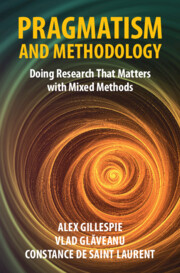Book contents
- Pragmatism and Methodology
- Pragmatism and Methodology
- Copyright page
- Dedication
- Contents
- Preface
- Chapter 1 Pragmatism
- Chapter 2 Epistemology
- Chapter 3 Theory
- Chapter 4 Creating Questions
- Chapter 5 Eliciting and Transforming Data
- Chapter 6 Mixing Qualitative and Quantitative Methods
- Chapter 7 Multi-resolution Research
- Chapter 8 Ethics
- Chapter 9 Expanding Human Possibilities
- References
- Index
- References
References
Published online by Cambridge University Press: 04 January 2024
- Pragmatism and Methodology
- Pragmatism and Methodology
- Copyright page
- Dedication
- Contents
- Preface
- Chapter 1 Pragmatism
- Chapter 2 Epistemology
- Chapter 3 Theory
- Chapter 4 Creating Questions
- Chapter 5 Eliciting and Transforming Data
- Chapter 6 Mixing Qualitative and Quantitative Methods
- Chapter 7 Multi-resolution Research
- Chapter 8 Ethics
- Chapter 9 Expanding Human Possibilities
- References
- Index
- References
Summary
Information
- Type
- Chapter
- Information
- Pragmatism and MethodologyDoing Research That Matters with Mixed Methods, pp. 202 - 235Publisher: Cambridge University PressPrint publication year: 2024
- Creative Commons
- This content is Open Access and distributed under the terms of the Creative Commons Attribution licence CC-BY-NC 4.0 https://creativecommons.org/cclicenses/
